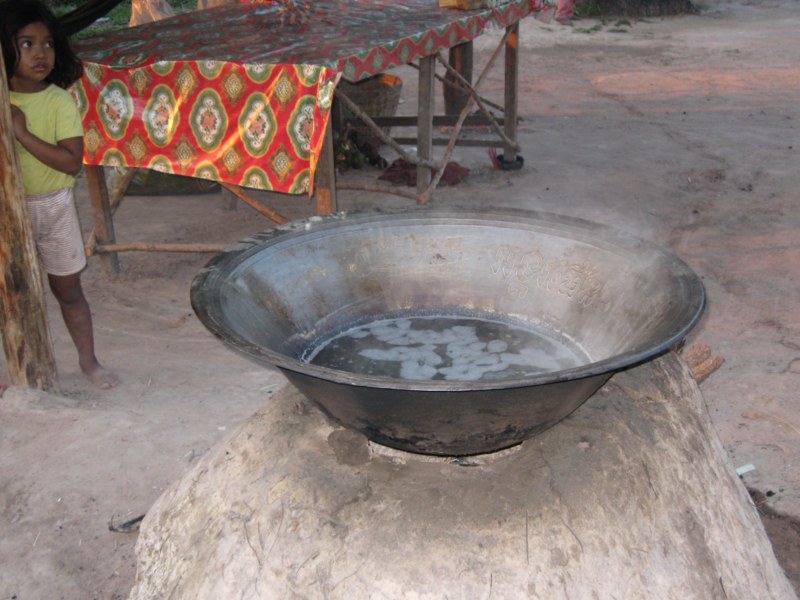Sweetness from the top of the tree
The male is shaped like a fork with the central prong much longer; the three pronged like a knobbly green tuber, buy both can be used. When they look ready, the villagers prop their ladders against the tree, just a bamboo pole with rungs on each side, and climb up. Syrup can be harvested from both flowers, but they have to be ‘ready’, turgid and yielding slightly when squeezed. If there are too many flowers on a single tree, they remove some of them off to concentrate the yield. Then they ‘milk’ the chosen flowers by squeezing them gently between large wooden tongs, like those that were once used to get sheets out of the boiler. This is known as ‘training’ and it is done morning and evening for a four days, After each training session, they dip the end in a bottle of water. Then when it seems ripe enough to harvest, they cut off the tip with a sharp knife. If the tip seeps the sugar, they attach a bottle to the end and allow the juice to collect. At the end of the day, they pour the juice into a large metal bowl and concentrate the syrup overnight by allowing it to simmer gently on top of an oven made of the particularly pure clay that can only be collected from termite mounds. As the branches smoulder, they advance them into the oven to maintain an even heat, hot enough the boil the juice but not too hot so it will dry and burn.
The concentrated syrup is brown and tastes like fudge or maple syrup. It is just right for cooking as a moderate heat makes it runny. It sweetens the coconut cream and fish sauce in Fish Amok. It is delicious when poured on fresh mango and coconut sticky rice and when added to tamarind juice and lime, it make such a refreshing drink. Or just buy a packet of palm sugar lozenges wrapped up in a palm leaf. So much better than Kendal Mint Cake.



